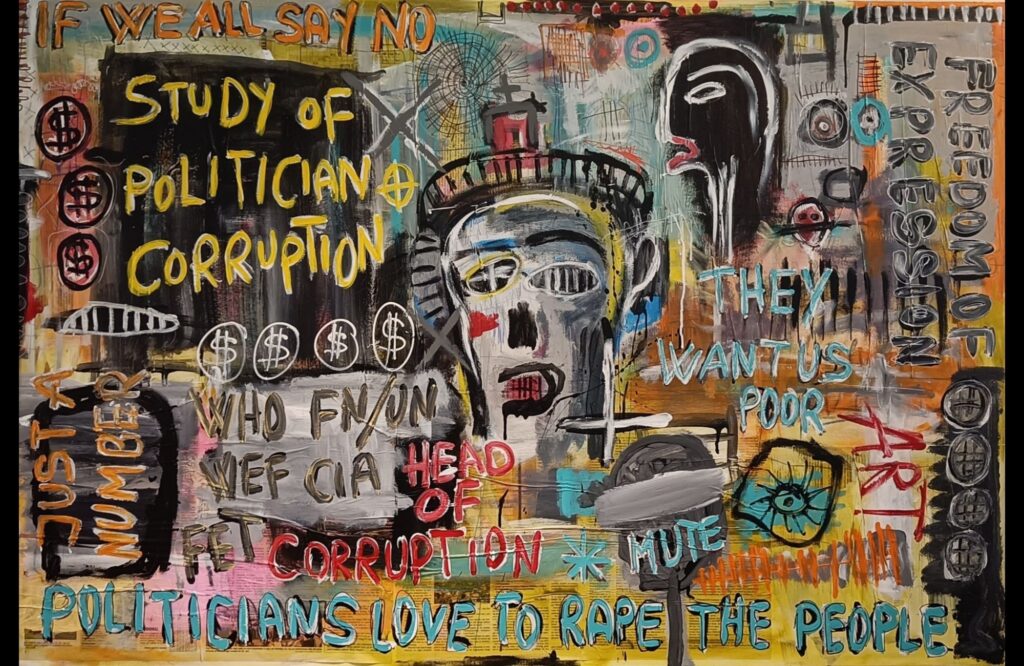Art has always been a powerful medium for expressing dissent, challenging the status quo, and igniting conversations about pressing social issues. The artwork in question serves as a striking testament to this tradition, blending vibrant colors and bold text to convey a potent message about political corruption and social justice.
At first glance, the chaotic arrangement of words and images draws the viewer in, creating an immediate sense of urgency. Phrases like “Study of Politician Corruption” and “They Want Us Poor” resonate deeply, reflecting a collective frustration with systems that prioritize power and profit over the well-being of the populace. The artist’s choice to juxtapose these phrases with symbols of money and authority underscores the pervasive nature of corruption in politics.
The use of expressive figures and abstract forms adds another layer of complexity. The haunting faces and distorted features evoke a sense of despair and anger, embodying the feelings of those who feel marginalized and unheard. This visual language speaks volumes, illustrating the emotional weight of the issues at hand.
Moreover, the artwork’s call for “Freedom of Expression” serves as a reminder of the importance of voicing dissent in a world where many are silenced. It challenges viewers to reflect on their own roles in the fight against injustice. Are we merely passive observers, or do we have the power to effect change by saying “no” to corruption and inequality?
In a time when social justice movements are gaining momentum, this piece stands as a rallying cry. It encourages us to confront uncomfortable truths and to recognize that art can be a catalyst for change. By engaging with such powerful works, we not only honor the artist’s vision but also contribute to a larger dialogue about the world we inhabit.
As we navigate the complexities of our political landscape, let this artwork inspire us to take action, to speak out, and to demand accountability from those in power. After all, if we all say no, we can begin to dismantle the structures that perpetuate corruption and inequality. Art, in its many forms, has the potential to unite us in this vital struggle for justice.

